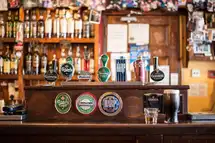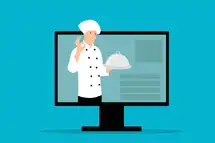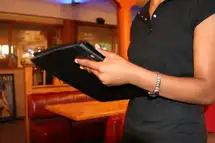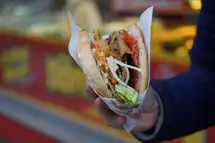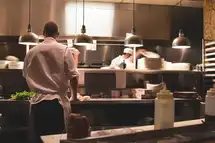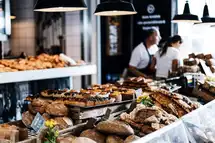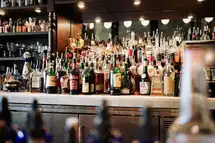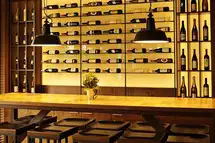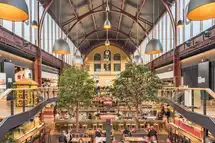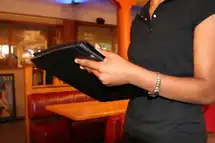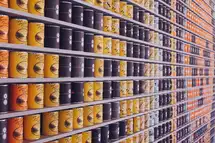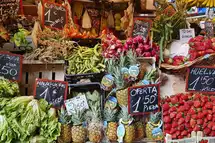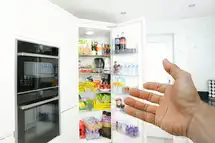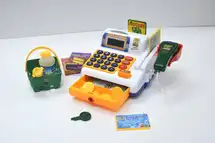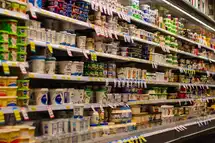What is emerging restaurant technology?
Restaurant technology is constantly evolving, with new tools and applications being developed all the time. Some of the latest and most exciting restaurant technologies includes mobile ordering apps, online reservation systems, and self-service kiosks. These technologies help restaurants improve efficiency, reduce costs, and provide a better overall experience for customers. As restaurant technology continues to evolve, it will be interesting to see how it further changes the dining experience.
Emerging Restaurant Technology Solutions Take Customer Service to New Heights
The Right Restaurant Technology Can Grow Your Market
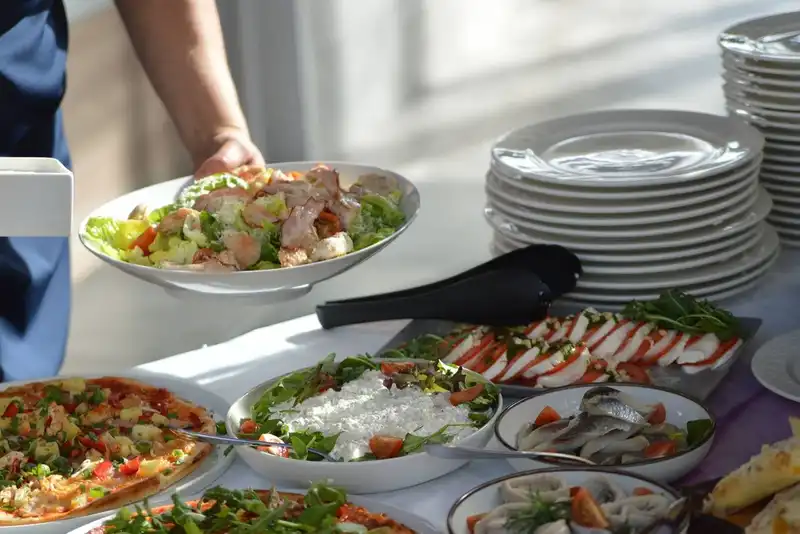
Countless restaurants have turned to technology to provide their customers with better service. Emerging tech trends have enabled guests to engage with restaurants in unprecedented ways. For instance, McDonald's outdoor digital drive-thru menu displays -- a technology developed by Dynamic Yield -- shows customers menu options that take into account weather, day, trending menu items, and current restaurant traffic. It even suggests suitable accompaniments based on the guest's current selection.
It is not just bigger restaurant chains adopting these tech trends, small businesses too are considering them. A much-adopted restaurant technology in recent times has been QR Codes. This technology makes ordering and paying easier. In a National Restaurant Association survey, 52% of respondents said they found paying with QR codes very convenient. In addition, to make things convenient for consumers, restaurants can track consumer behavior with the vast amount of data collected through these codes.
While these are some of the newer technologies that have come into use in the last few years, basic restaurant technologies are also evolving. For example, a supply chain management system is no longer confined to tracking suppliers and fulfilling orders. Instead, by integrating new technology trends like radio frequency identification (RFID), blockchain, and robotics, supply chain management has developed into a much more advanced system and supports current consumer trends. Similarly advanced, wireless point of sale systems allows customers to take payments anywhere in the building, making transactions more efficient and shortening queues. In addition, automated marketing tools that easily integrate with these POS systems help restaurants create and send customized messages to their target audience through text, email, and social media. And with real-time updates of inventory data, these POS systems make inventory management easier while also expanding your reach.
Let's look at the latest restaurant technology that's changing the Food Service industry.
1. AI Chatbots
In the hospitality industry, the importance of a better guest experience can not be stressed enough. Which is why many restaurants are now turning to AI chatbots to ensure the best possible service. Using natural language processing and machine learning, these chatbots can provide a more personalized experience for each customer. In addition, they can also collect data about customer preferences and behavior, which can be used to improve overall service delivery.
There are multiple examples of chatbots in the restaurant industry. In 2020, as part of its digital platform expansion, Chipotle introduced a Facebook chatbot, Pepper. Offering "concierge" services, Pepper enables customers to place orders and pay directly through Facebook Messenger. However, it was Dom -- a chatbot Domino's launched in 2017 -- that transformed digitalization in the restaurant industry. This voice-activated ordering assistant simplifies the ordering process and responds to customer inquiries. It remembers a customer's prior orders and, with data integration, calculates the estimated time of delivery accurately. Dom can track the progress of each pizza -- from preparation till delivery -- to give customers real-time updates on their order.
Chatbots improve customer service by providing 24/7 support. Unlike human customer service representatives who can only work during business hours, chatbots are available anytime, day or night. For example, if a customer has a question about a restaurant's menu or needs help placing an order, they can get the answers they need immediately.
This has helped restaurants minimize costs associated with customer service. Hiring and training customer service staff can be expensive, but with a chatbot, it's easy to reduce or eliminate these costs. Also, bots never tire or need breaks; they can handle a high volume of messages without slowing down or making mistakes, which often happens when humans are overwhelmed with work. Restaurant AI chatbots are making it easier for customers to get the information or assistance they need quickly and easily. It's a win-win for all.
You want to grow you market, and you're wondering what's the best way to do it.
Restaurant tech is your answer. This article tells you why.
2. Online Food Delivery
Modern life is all about convenience. And when it comes to essentials like food, there could be nothing better than avoiding long queues outside restaurants. Most restaurants grabbed the idea of online ordering and delivery when the Covid pandemic struck in early 2020. When most people started working from home, online ordering relieved them of the risky chore of having to go out to buy food.
As per Future Market Insights, the global market for online food delivery services is anticipated to have a market value of $97,291.58 million by 2032. In the US alone, this market is expected to grow at 9.8% CAGR between the forecast period of 2022 to 2032.
Online ordering and delivery work in a couple of ways. The most common is to have the customer place their order on the restaurant's website or Mobile App. Once the order is placed, the restaurant will start preparing the food and share an estimated time of delivery with the customer. When the food is ready, a delivery agent will be dispatched to deliver the order to the customer's address. Some restaurants, mostly large chains, have their own fleet of delivery drivers and delivery apps integrated into their websites and mobile apps. Smaller businesses outsource the job to a third party delivery service like Uber Eats or DoorDash. In either case, someone will bring the food to the customer's door once the food is ready.
What good is it? Well, it has many benefits-
- Allows customers to avoid crowds and long lines- When social distancing became a norm, online food delivery came as a respite. Customers who order online don't have to worry about waiting in line at busy restaurants during peak hours or worrying about coming in contact with people.
- It's convenient- Online ordering and delivery are more convenient for customers than calling a restaurant or physically going to it. Customers can order from their computer, tablet, or smartphone whenever they want.
- Saves money on gas and time- Customers don't have to waste gas driving to pick up their food since it will be delivered to them. And they save time since they don't have to wait in line for a table at the restaurant.
- Fewer mistakes- There is less room for error when orders are placed online because all the information is right before the employee processing the order.
3. Contactless Payments

The Covid pandemic changed the way we live and shop. Fear of the virus made nearly everybody opt for contactless payments. This method also saves people time, and the trouble of having to fish out their wallets for cash or cards. Today, almost every restaurant, especially high-traffic fast-casual and quick service ones, have multiple options for contactless payments.
Contactless payments are made possible by several technologies. One of them is Near-field Communication (NFC). NFC, a wireless connectivity technology, enables two devices to communicate with each other when they are close, typically within a few centimeters. This technology can be used for other applications in addition to contactless payments, such as data sharing and connecting to WiFi networks. NFC payments are typically made by holding your NFC-enabled device close to the point of sale (POS) terminal that supports such payments. It's similar to how contactless credit cards work.
QR codes are also now popular. The QR code -- a machine-readable code consisting of a grid of black and white squares -- stores URLs that can be read by the camera on a smartphone. These codes can be scanned by smartphones and wearables like smartwatches or fitness trackers. That is, if you have a QR code reader installed on your device. You can make payments without having to enter your PIN. However, this depends on your country and the payment apps you have installed on your phone. Google Wallet and Apple Pay, both support QR code payments in the United States. In China, meanwhile, Alibaba's Alipay system is widely used for contactless payments via QR codes.
Some restaurants have also implemented systems that allow customers to order and pay at the table for their meals via an app on their smartphone. It is particularly convenient for those who want to avoid waiting in line or dealing with cash, while reducing the risk of contamination by minimizing contact with others.
No question about it, Food Trends like this one are definitely here to stay.
4. Self-ordering Kiosks
Before the pandemic, self order kiosks at restaurants caused some debate among industry experts. Some said the kiosks were efficient and helped streamline the ordering process; others argued that they caused customers to lose out on human interaction that's part and parcel of the dining experience. The need for social distancing during the pandemic, however, changed everyone's outlook toward these touchscreen-based ordering devices. It could let customers place orders and pay effortlessly, and without having to queue up. And they allowed businesses to process more orders, while collecting customer data and running Rewards Programs at the same time.
It is no surprise, then, that there has been a rise in the number of restaurants installing kiosks. Tillster reports that the self order kiosks market is growing at a fast pace and is anticipated to become a $30.8 billion market by 2024.
Self order kiosks offer businesses several benefits, including reducing labor costs, increasing efficiency, and offering better customer experience. Interestingly, some studies have shown that customers spend more money when they use a self order kiosk, as they are more likely to add additional items or make impulse buys when they see them displayed on the screen.
Self order kiosks also reduce the time customers spend at a restaurant. This is because they can place their order at their own pace without having to wait for a server to take their order and serve it to them. This can lead to increased table turns and higher profits.
While there are clear advantages to using self order kiosks, some potential drawbacks should be considered. For instance, if not implemented correctly, these kiosks can lead to longer lines and frustrated customers. Additionally, some customers prefer personal interaction with a human server. As such, restaurateurs need to weigh the pros and cons of self order kiosks before deciding whether or not they want to ride this bandwagon.
You want to invest in the right restaurant tech that can grow your market.
This article tells you what those tech solutions should be.
5. Kitchen Display Systems
A Kitchen Display System (KDS), a sub-segment of fast-growing digital display devices, is a system that helps restaurants take orders from customers and convey those orders to the kitchen staff as quickly and efficiently as possible. The KDS consists of a touchscreen monitor, a printer, and software that integrates with the restaurant's point of sale system.
When an order is placed at the front counter, it is sent to the KDS, where the kitchen staff can see what needs to be prepared. The system is designed to reduce order mistakes and speed up service time. In fact, one of the biggest advantages of a kitchen display system is that it can help reduce order time by instantly connecting the front of house with the back of house. By giving chefs direct access to information on incoming orders, they can start preparing meals as soon as an order is placed, which reduces the wait time for customers.
A kitchen display system can also help reduce food waste. When chefs know what they need to prepare, they are less likely to make unnecessary or duplicate dishes, which can often go uneaten and be thrown away. In addition, a KDS can provide servers with up-to-date information on an order status, promoting transparency and further enhancing the customer's dining experience.
What to Consider When Investing in Restaurant Tech

As a small business owner, if you are considering a technology upgrade, the last thing you'd want is for your staff to struggle with a new system. This can lead to frustration and productivity loss and impact the business negatively. Therefore, it is important to make sure that any new tech system you adopt is easy for your employees to learn and use, with minimum training required.
There are a few other points to keep in mind when introducing new restaurant technology-
- How will the technology impact your operations- will it streamline them or cause more disruption?
- You need to be able to afford the new technology, both in terms of the initial investment and ongoing costs, such as subscription fees. It's important to strike a balance between getting the features you need and controlling costs.
- Whether the new technology is compatible with your existing infrastructure -- you'll want to ensure that any new system can integrate seamlessly with your existing POS and other systems. A lack of integration can lead to all sorts of problems, from duplication of effort to incompatibility issues. So choosing a solution that offers smooth integration for a hassle-free transition is key.
- What kind of support is available for the new technology from the vendor and other online resources?
- How often will the new technology need to be updated to stay current?
- How secure is the new technology in terms of data and physical security?
- What kind of ROI can you expect by implementing this technology?
- Are you prepared to deal with growing pains that will come from adopting the technology?
- As your business grows, you'll need a restaurant technology solution that can scale up easily without breaking the bank. Again, this comes down to finding the right balance between features and cost. Look for something with plenty of room to grow, without being excessively expensive.
You've always run your restaurant the old-school way.
But you've found that's no longer the way that works in this day and age.


